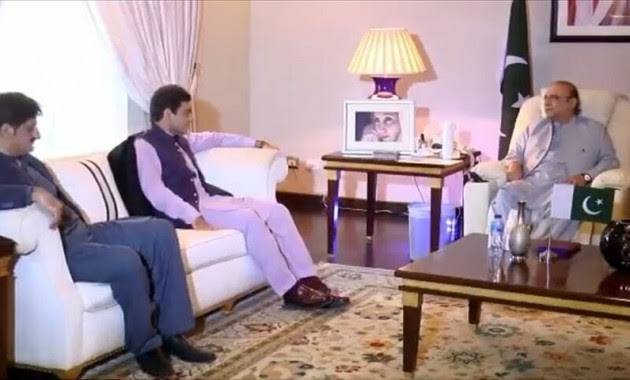
The battle for the throne of Punjab is being fought in the courts, and it had to remain so because, in the previous episode, the courts went beyond the Constitution in sending a message to all parties that they are also regular, major participants in the ongoing political battle. And if the intention is not included in the equation, then a unique interpretation of the Constitution may also come out.
This time, the real battle is behind the scenes, and its objectives are long-term.
The first of these long-term goals is to provide opportunities for the People's Party to re-establish a foothold in Punjab and Balochistan.
According to reliable sources, participation of the members of the assembly in the joint parliamentary session of PTI and PML-Q showed that 30 members less than the required number showed up in the meeting to save the government. Chaudhry Pervez Elahi had already realized this before announcing the dissolution of the Punjab Assembly.
Sources also say that in the coming days, Pakistan Peoples Party will use this vacuum to get a bigger share of power in the Punjab. A key area of focus for the PPP is southern Punjab, whose parliamentarians are usually swayed by whichever direction the establishment favors.
The interesting thing is, whichever PTI assembly member met a group of PPP leaders who are ministers dispatched from Sindh, the next day that member of the assembly was reportedly present with another member of the assembly, as a facilitator to negotiate with that team of senior ministers. PML-N itself made such an effort in the early days, but now only Aleem Khan's people are doing this work. Even they have been instructed that the final decision will be taken by the team of PPP ministers.
This time, the real battle is behind the scenes, and its objectives are long-term.
The first of these long-term goals is to provide opportunities for the People's Party to re-establish a foothold in Punjab and Balochistan.
According to reliable sources, participation of the members of the assembly in the joint parliamentary session of PTI and PML-Q showed that 30 members less than the required number showed up in the meeting to save the government. Chaudhry Pervez Elahi had already realized this before announcing the dissolution of the Punjab Assembly.
Sources also say that in the coming days, Pakistan Peoples Party will use this vacuum to get a bigger share of power in the Punjab. A key area of focus for the PPP is southern Punjab, whose parliamentarians are usually swayed by whichever direction the establishment favors.
The interesting thing is, whichever PTI assembly member met a group of PPP leaders who are ministers dispatched from Sindh, the next day that member of the assembly was reportedly present with another member of the assembly, as a facilitator to negotiate with that team of senior ministers. PML-N itself made such an effort in the early days, but now only Aleem Khan's people are doing this work. Even they have been instructed that the final decision will be taken by the team of PPP ministers.

